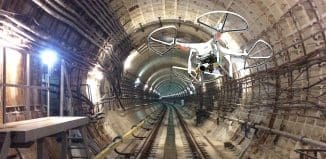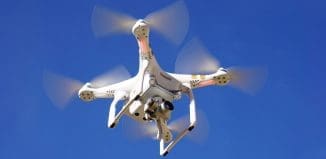911 in Israel: A centralized emergency center
This post is also available in:  עברית (Hebrew)
עברית (Hebrew)
 How many citizens have already paid with their lives and how many more will pay in the future for the lack of a centralized emergency call center in Israel before a Bill is approved in Government?
How many citizens have already paid with their lives and how many more will pay in the future for the lack of a centralized emergency call center in Israel before a Bill is approved in Government?
Before the next disaster occurs, with emergency distress calls ending up at the wrong place due to confusion, it is time to adopt the model of the 911 in the U.S. or as in Europe. A consolidated emergency center in Israel is not a luxury; it is a necessity under the complex and constant threat on the civilian population in the country. We should consider this now, a moment before the eleventh hour, and think about uniting the emergency centers including the police, Magen David Adom, fire and rescue, hazardous materials, Electric Corporation (and others).
The critical function of the rescue organizations who have worked day and night in recent weeks is clear, leading from the event of the kidnapping and murder of Eyal Yifrach, Gilad Shaar and Naftali Frenkel and continuing with the fierce fighting in the Gaza Strip during operation “Protective Edge” with sustained attacks at Israeli civilians, there is a clear need for a centralized emergency center to handle all types of distress calls from citizens, which of course at times like these are on the rise.
Even if you consider the response given by the Police Hotline of the Samaria and Judea District as a local malfunction, conclusions must be drawn and hopefully implemented. The missile salvos sent continuously against Israel over the course of a month to harm the population, clarifies the critical necessity for rapid response rescue forces, the ability to quickly understand and analyze incident details.
The reality in Israel in 2014 is that the country has appointed five or six different types of service for a citizen in a state of danger to call: police (100), MDA (101), Rescue (1221), Fire (102 ), Local Council (106), IEC (103) and more. Of course, in the case of the children or senior populations, it’s all the more difficult to remember and distinguish between all of these numbers under pressure – that’s precious time that could cost lives.
As the emergency organizations in Israel are subject to different government regulation such as the Ministry of Health (for MDA) and Ministry Of Homeland Security (for Israel Police and Fire & Rescue Department) – something no minister to date has managed to change, for mostly objective and professional considerations – the consolidation and integration, both technological and operational of all emergency calls to a unified focus, such as the American 911.

The variety and complexity of events and threats to the vulnerable Israeli home front requires a change in perception. Unlike other countries where the threats are usually fixed (car accidents, fires, injuries, damages and criminal) Israel has a much wider diversity and includes both unconventional threats and security threats, looked after through a number of agencies eg. The IDF, Israel Police, the Shin Beit and more.
If we add to the factors that threaten the citizens of Israel, the threat of hazardous substances in the heart of civilian areas (eg. refineries, chemical and petrochemical factories like that in Haifa Bay as an example) we get an unbalanced equation, on the one hand countless threats and on the other too few solutions.
The standing bill in the Knesset (due its first reading in the coming days) began its long, winding trajectory in 2006 (8 years ago!) “The Union Bill for Unified Emergency Telephone Lines, 2006″ by Knesset member Yoram Marciano.
While Governments change hands, there is still no solution, the current bill has been called a “Bill for unified emergency telephone lines 2012” and it’s currently at the point of its “first reading”, meanwhile it will take many years or a disaster of catastrophic proportions, to hasten the long- awaited solution.
Under the concept of a “consolidation of emergency call centers”, that’s not to say that one call center should simultaneously handle all of the events happening in the country. It should be four or five control rooms, in a right geographical diversification that controls and aware of the local population as well as roads, traffic, mass crowd gathering places etc. inside and out and they should be able when necessary to come together or work in parallel.
It seems that the legal hurdle that must accompany and support the process of establishing unitized emergency centers is completely neglected and not dealt with at all.
For example, legal support is required to identify callers location, personal details and critical personal medical records (blood type, chronic, sensitivities etc.) to save human lives.
Security and rescue centers have to take many skills and assets from the civilian sector and include technologies used in customer service centers (CSR) providing telephone service to customers all over the world. You can only imagine what they could contribute to these technological systems, improving essential services.
– Queue Management: It is crucial to classified emergency incoming call and forwards it as quickly as possible for those available, trained and able to deal with. The theory of queue management takes into account the resources available at the center, the predictable amount of calls, type of calls, urgency, call duration, etc
– Inference and recommendation systems: accumulating vast information obtained from the call center to gather statistics over time, drawing operational conclusions quickly and recommending the dispatcher, shift manager or commander to focus on best practices in terms of prioritizing resources and using them (specialized crews, emergency vehicles, towing means, etc.)
iHLS – Israel Homeland Security
– Network “Choking”: around almost every emergency event there is peak traffic in communications to the emergency call center when there is obviously a close relationship between the dimensions of the event to the amount of calls. Naturally, the center staff can only provide a solution for a certain number of calls. To avoid a situation where certain calls are redirected due to overload – “Network choking” prevents callers from reaching the emergency call center if the incident has already been reported. “Network Choking” can also be used as a function of GPS location of the caller, since the first report from a car accident is very important while the later calls for the same incident just get in the way of operations.
– Supports a variety of communication methods – the accessibility of emergency call centers: All emergency centers in Israel can now only be contacted by phone, talking with a dispatcher hence an extensive section of the population is unable to make these phone calls: eg. Mute or deaf people, those speaking foreign languages and more. There is a critical need to introduce into emergency call centers technology that can support contact through text messages, picture messages (MMS), video or through a smartphone app which reports the exact coordinates (location) of the caller.
– Announcements of known events. A pre recorded announcement should informs callers based on their specific location (based on cellular technologies) avoids unnecessary waiting time for the caller as dispatcher who knows of the event and is handling it.
– Recording System: all calls taken by the emergency centers all the time must be recorded, mainly for analysis and reasoning. Recording systems must provide powerful retrieval capabilities, simple and easy to use, but the database of recordings of course be well secured and impenetrable from the outside.
– Data Security and Survivability of Service. The emergency call centers should be treated as a strategic asset with an absolute requirement for continuity of operation under various circumstances. Hence we have to determine the level of physical security and protection necessary of these facilities, alternatives and mutual backup between the emergency centers, multiplied infrastructures (telecommunications, electricity, air, etc.)
Staffing of Call Centers: Even if the best decisions regarding the consolidation of the country’s emergency centers are made and let’s say they will be housed in modern buildings and be equipped with the latest technology, this means nothing without a professional and experienced staff with sufficient staff numbers.
The contact at the Dispatch center receiving the call should be a type of “Super Man” (or Superwoman) who understands immediately what to do in the event of emergency, who can quickly classify and decide how to handle each event, mainly based on many years of operational experience. The emergency call centers should be considered the most coveted place to works for during the career of a the police or MDA service
Finance and Budget: the balancing point in budgeting of these consolidated centers may take more than two or three years, but it is important to calculate correctly the alternative expenditure for the existing situation, this includes various decentralized centers, extra personnel and duplicate technological systems. It will release, in time, the budgets from the local municipalities, the Israel Police, Magen David Adom and other emergency organizations active in the country, and leave them, as well to the main business in which they excel: saving lives.





























